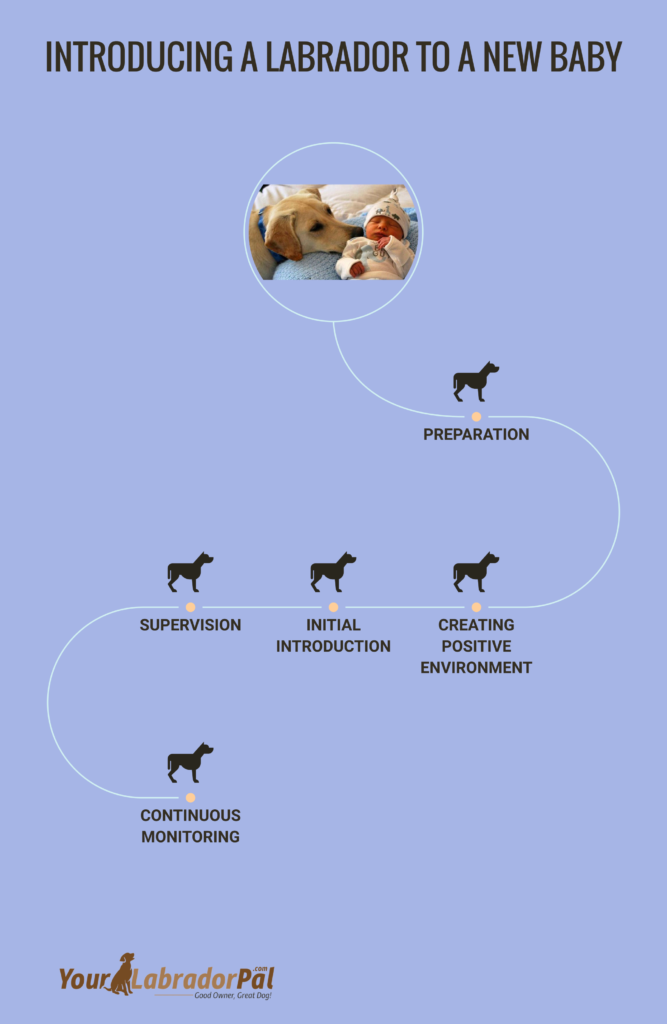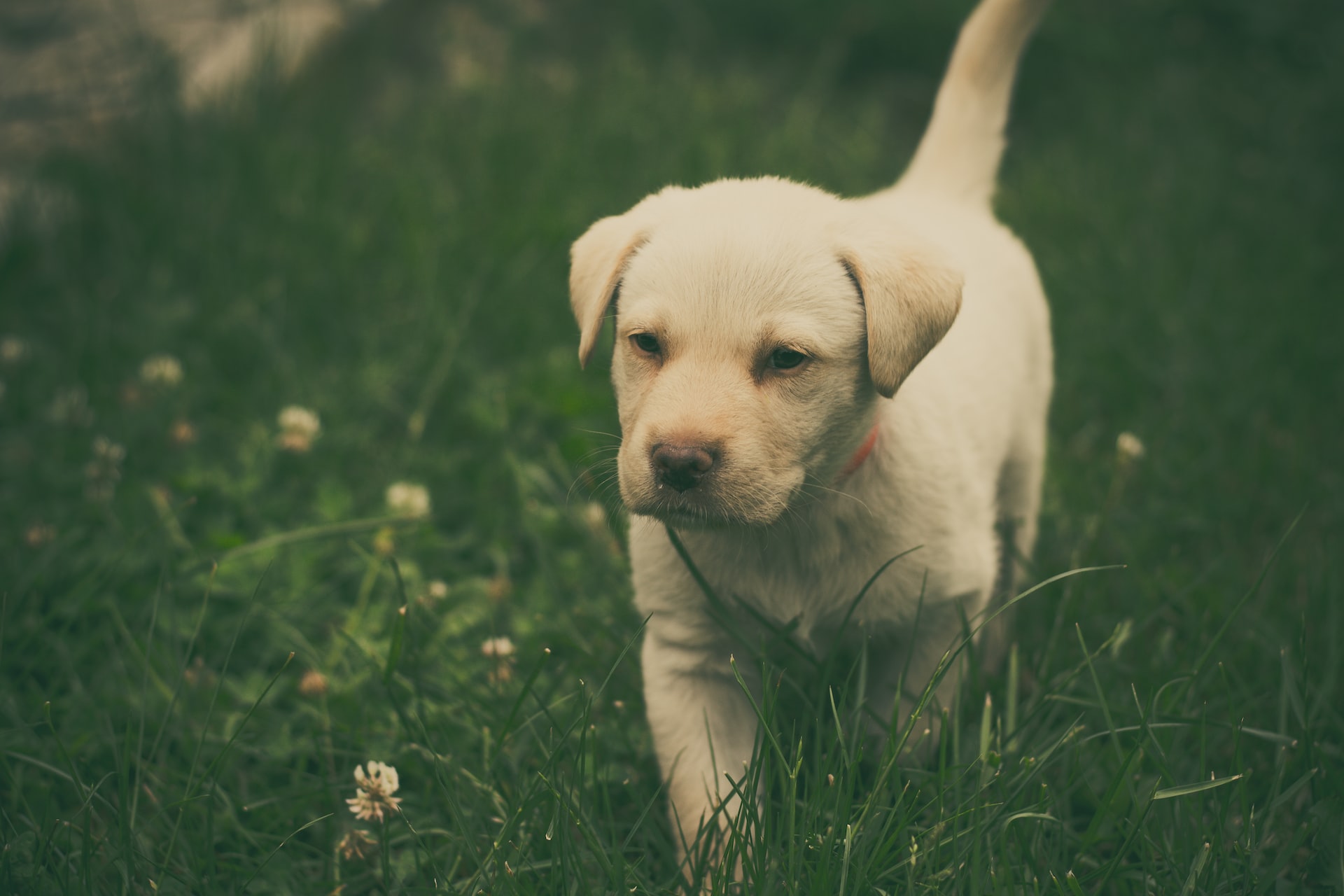Introducing a Labrador to a New Baby: A Guide for a Smooth Transition
Welcoming a new baby into the family is an exciting time filled with joy and anticipation. As parents, we strive to create a harmonious environment for our little ones, and this includes introducing them to our beloved furry friends, such as Labradors. Labrador Retrievers are known for their gentle and friendly nature, making them excellent family pets. However, it is crucial to ensure a safe and seamless introduction between your Labrador and your new baby. In this guide, we will provide valuable recommendations and insights on how to introduce a Labrador to a new baby, fostering a strong bond between them while prioritizing safety.
Are Labradors Safe for Babies?
Yes, Labradors can be good for babies. Labradors often have a gentle temperament and are known for their patience, making them generally well-suited for young children. They can be playful companions, provide emotional support, and may develop a protective instinct toward the baby. However, it’s crucial to supervise interactions between the dog and the baby at all times to ensure the safety of both.
Remember, while Labradors are typically friendly, individual dogs can vary in temperament and behavior. Some Labradors may be too energetic or boisterous for young children, and there is always a risk of accidents or unintentional harm. Proper training, socialization, and careful supervision are necessary to mitigate any potential risks and ensure a positive and safe interaction between the Labrador and the baby.
Preparing Your Labrador for the Arrival of the Baby
Introduce your Labrador to baby-related items such as cribs, strollers, and toys in advance. Allow them to sniff and explore these objects, associating them with positive experiences. Gradual exposure will help your Labrador familiarize themselves with the new sights, sounds, and scents they will encounter when the baby arrives.

🟦 Implementing New Rules and Boundaries
Establishing new rules and boundaries for your Labrador before the baby’s arrival is essential. This includes limiting access to certain areas of the house or teaching them to stay calm during designated times. Consistency in training and reinforcement will help your Labrador understand their role in the new family dynamics.
🟦 Enrolling in Obedience Training Classes
If your Labrador has not undergone formal obedience training, enrolling them in a class can be immensely beneficial. Obedience training enhances communication between you and your dog, reinforcing basic commands such as “sit,” “stay,” and “leave it.” This training will be invaluable during the introduction process and beyond.
Creating a Positive Environment
Creating a positive and safe environment for both your Labrador and a new baby is essential to foster a healthy relationship between them. Consider the following recommendations:
🟦 Establishing a Safe Space for the Labrador
Before the baby arrives, designate a safe space for your Labrador where they can retreat when they need some alone time. This area should be comfortable and equipped with their bed, toys, and water. It will serve as their sanctuary during times of stress or when they simply need a break.
🟦 Introducing the Labrador to the Baby’s Scent
Introduce your Labrador to the baby’s scent by allowing them to sniff a blanket or clothing item belonging to the baby. This will help familiarize them with the baby’s unique smell, making the initial introduction less overwhelming.
The Initial Introduction of Labrador to a New Baby
When the time comes for the first meeting between your Labrador and new baby, it is crucial to approach it with caution and careful preparation. Check out the following:
🟦 Controlled On-leash Introduction
For the initial introduction, have your Labrador on a leash to ensure control and safety. Allow them to approach the baby at their own pace, while you closely monitor their behavior. Avoid any sudden movements or loud noises that may startle either the dog or the baby.
🟦 Observing the Labrador’s Behavior
During the first interaction, pay close attention to your Labrador’s body language. Signs of curiosity, wagging tails, and gentle sniffing are positive indications. However, if your Labrador displays signs of anxiety or aggression, remove them from the situation calmly and seek professional guidance if needed.
Supervised Interactions and Positive Reinforcement When Letting Your Labrador Meet a New Baby
To foster a positive relationship between your Labrador and new baby, it is important to encourage gentle behavior and reward positive actions. Here’s how to do it:
🟦 Encouraging Gentle Behavior
Teach your Labrador to be gentle around the baby through consistent reinforcement. Reward them with treats, praise, and affection when they exhibit calm and gentle behavior. Use positive reinforcement to reinforce desirable actions, such as sitting or lying down when near the baby.
🟦 Rewarding the Labrador’s Calm Demeanor
Whenever your Labrador remains calm in the presence of the baby, reward them with praise and treats. Positive associations will help them associate the baby’s presence with positive experiences, strengthening the bond between them.
🟦 Establishing Boundaries and Personal Space
It is important to establish boundaries and personal space for both the baby and the Labrador. Teach your Labrador to respect the baby’s space and never allow them to jump on or invade the baby’s crib or play area. Similarly, create safe zones where the baby can explore without interference from the dog.
Continuous Monitoring and Adaptation After the Meet-Up
Even after the initial introduction, continuous monitoring and adaptation are necessary to ensure the safety and well-being of both your Labrador and baby. Here are the proper ways to do it:
🟦 Ensuring Consistent Supervision
Never leave your Labrador and baby unsupervised, especially during the early stages of their relationship. Accidents can happen even with the most well-behaved dogs, so it is crucial to be present and attentive during interactions.
🟦 Assessing and Addressing Any Signs of Discomfort
Monitor your Labrador’s behavior closely, especially during interactions with the baby. If you notice any signs of discomfort, stress, or anxiety, consult with a professional dog trainer or behaviorist to address the issue promptly.
Recommendations for Building a Lifelong Bond Between Your Baby and Labrador
With time, patience, and consistent effort, you can help foster a lifelong bond between your Labrador and your new baby. To achieve this, encourage interactive playtime between them and your Labrador. This can include gentle supervised games, such as fetch or hide-and-seek, that promote positive associations and shared enjoyment.
Involve also your Labrador in baby-related activities, such as walks with the stroller or allowing them to be present during feeding and nap times. This inclusion helps strengthen the bond between them and reinforces Labrador’s role as a cherished member of the family.
When is the Right Time to Introduce a Labrador to a New Baby
Introducing a Labrador to a new baby requires careful consideration to ensure the safety and well-being of both the baby and the dog. The timing of the introduction is an important factor to consider. Here are a few guidelines to help determine the right time:
🟦 Wait until the baby is a few months old
It is generally recommended to wait until the baby is at least three to six months old before introducing them to a Labrador or any other dog. This allows time for the baby to establish a routine and for parents to adjust to the demands of caring for a newborn. Babies at this age are also less fragile and have stronger immune systems.
🟦 Assess the Labrador’s behavior and temperament
Before introducing your Labrador to the baby, it’s essential to evaluate the dog’s behavior and temperament. Ensure that the Labrador is well-socialized, has experience with children, and displays a calm and gentle demeanor. If your Labrador shows signs of aggression, or anxiety, or has difficulty following commands, it is important to address these issues with training and behavior modification before bringing the baby into the picture.
If you have any concerns about the dog’s behavior or how they are responding to the baby, consult with a professional dog trainer or behaviorist for guidance.
Final Words
As we conclude this blog on introducing a Labrador to a new baby, it is evident that this process requires patience, preparation, and a keen understanding of both the dog’s and the baby’s needs. While Labradors are known for their friendly and gentle nature, it is crucial to ensure a smooth and safe transition for everyone involved.
With patience, understanding, and careful planning, introducing a Labrador to a new baby can create a beautiful bond between them. Both the dog and the baby can benefit greatly from the companionship, love, and joy they bring to each other’s lives.
As always, prioritize the safety and well-being of both your Labrador and your baby throughout this journey. With the right approach, your family will thrive with the addition of a loving Labrador and a precious new bundle of joy.
Frequently Asked Questions
Q1. Are Labradors good at adapting to a baby’s schedule?
Labradors are generally adaptable and can adjust to a baby’s schedule. With proper training and consistency, Labradors can understand and adapt to changes in routines, including those associated with caring for a baby.
Q2. How can I help my Labrador adjust to a new baby in the family?
To help your Labrador adjust to a new baby, gradually introduce them to the baby’s scent and sounds before the baby arrives. Maintain a routine and provide your Labrador with plenty of exercise and attention to prevent them from feeling neglected.
Q3. Should I be concerned about allergies around Labradors and babies?
Labradors are considered hypoallergenic dogs, which means they are less likely to trigger allergies in people. However, individual sensitivities may vary, so it’s important to monitor any allergic reactions when introducing Labradors to babies.
Q4. How long does it take for a Labrador to adjust to a new baby in the family?
The adjustment period for a Labrador when a new baby arrives can vary. Some Labradors may adapt quickly, while others may take more time. With patience, proper introductions, and gradual exposure, most Labradors can adjust well to the new addition to the family.
Q5. Can Labradors help with the emotional development of babies?
Labradors can positively contribute to a baby’s emotional development. They can provide companionship, comfort, and a sense of security, which can promote emotional well-being and teach empathy and responsibility as the child grows.









